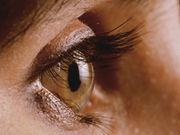Tool developed for use in high-risk adults in low-income communities in Mexico
MONDAY, Oct. 16, 2017 (HealthDay News) — A new screening tool can adequately detect risk of diabetic retinopathy in adults with diabetes in low-income communities in Mexico, according to a study published in the October issue of Preventing Chronic Disease.
Kenny Mendoza-Herrera, from the National Institute of Public Health in Mexico, and colleagues analyzed biochemical, clinical, anthropometric, and sociodemographic information from 1,000 adults with diabetes in low-income communities in Mexico in order to develop a screening tool based on a predictive model for early detection of diabetic retinopathy.
Time since diabetes diagnosis, high blood glucose levels, systolic hypertension, and physical inactivity were risk factors included in the screening tool. The researchers found that the model had a mean area under the receiver operating characteristic curve (AUC ROC) of 0.78 in the validation data set. Using the optimized cut point that best represented the study population, the model had a sensitivity of 82.9 percent and a specificity of 61.9 percent.
“We developed a low-cost and easy-to-apply screening tool to detect people at high risk of diabetic retinopathy in Mexico,” the authors write. “Although classification performance of our tool was acceptable (AUC ROC > 0.75), error rates (precision) depend on false-negative and false-positive rates. Therefore, confirmatory assessment of all cases in mandatory.”
Copyright © 2017 HealthDay. All rights reserved.








